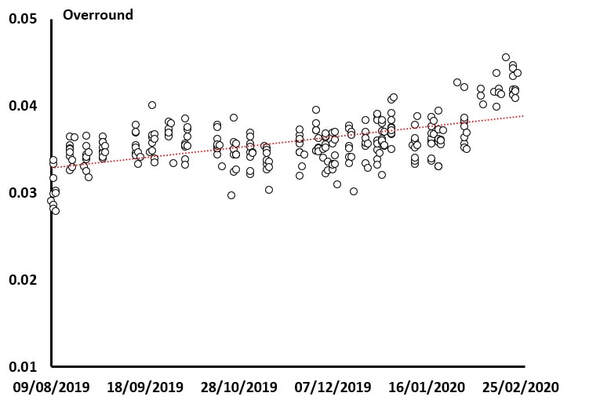A central way bookies make money is through the overround (vig) on a given bet. This involves bookies factoring in their cut to the prices offered to bettors. How much bookies want to take from each bet is key to what prices are offered. If bookmakers consistently price effectively, regardless of the outcome, they should not lose significant sums. In most cases, by pricing optimally they will nearly always win.
This can be seen by looking at betting odds for any sports market. The implied probabilities derived from the odds will always be over 1. Take the most recent EPL match between Everton and Manchester City – the odds suggested that Everton had an 9% chance of success while Manchester City held a 77% chance of success. There was a 17% chance of a draw. The extra 3% goes to the bookies.
How does this overround vary in football? The graph below shows the overround for the Premier League last season prior to the COVID break. What can be seen is that the overround on each match usually varies between just under 3% up to nearly 4.5%. On average they factor in about 3.61% for themselves on each match.
There can be some interesting things seen in this trend. First, the bookies take far less of a cut on the first round of matches where competition might be more intense in the market. Getting bettors onto your platform, with more competitive pricing (effectively a sale), might be seen as a useful strategy to keeping them.
Second, the bookies take trends upward as the season progresses. In particular, after the turn of the New Year, the bookies start to increase their cut.

 RSS Feed
RSS Feed